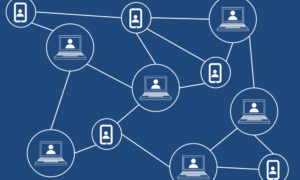
One of many sectors that boomed exponentially within the cryptocurrency sector last year was that of non-fungible tokens (NFT). Its growth in sales volume from just around $94 million in 2020 to $24.9 billion in 2021 is a clear indication of the same. However, emerging financial markets are always at the risk of falling prey to criminal elements, and NFTs have been no exception.
Just last month, the story of an art collector losing $2.2 million worth of NFTs in a wallet hack made headlines worldwide. Primarily, it highlighted the risks that exist in this nascent asset class. A phishing scam had drained his Ethereum wallet of 15 NFTs valued at a total of $2.2 million, including four apes from the “Bored Ape Yacht Club” collection. While he was able to retrieve back some pieces from his digital art collection with the help of NFT marketplace OpenSea. However, not everyone is lucky.
NFT creator “Richerd” stressed the same on Twitter recently, claiming that once an NFT leaves your possession there is nothing you can do to get it back. However, this “unforgiveness” of blockchain technology can be evaded by following a few steps according to him, the most important of which is educating oneself.
Apart from this, however, the founder of the NFT minting platform Manifold suggested that protecting the privacy of one’s ‘Seed Phrase’ was imperative. The seed phrase is a generated list of typically 12 to 24 words, in a specific order, issued to cryptocurrency wallet users to regain access and control of their funds on-chain. Regarding this, they said,
“I can’t stress this enough, there should never be a digital footprint of your seed phrase, if someone gets a hold of these words, then all is lost, they will forever have full control of your wallet. No site should ever ask for your seed phrase.”
Moreover, one should also prefer using a hardware wallet for storing their NFTs, since assets stored on software wallets could be exposed to malware, key loggers, screen capture devices, and file inspectors that are snooping for keys.
Users should also be mindful of the URLs they are clicking on, as many of them could be scamsters on the quest for an opening, according to Richerd.
6/ It’s easy to create a fake browser based popup that looks behaves like MetaMask. The key thing watch out for is that MetaMask will never ask you for your seed phrase without you initiating it.
Also this is why you should be using a hardware wallet in the first place…
— richerd.eth ᵍᵐ (@richerd) February 2, 2022
Lastly, he also stressed that NFT holders should verify the source website and pay close attention to where they are signing since hurried transactions could be malicious.
While NFT enthusiasts can certainly take these steps to protect the NFTs they own, the saga of property theft in this place hardly ends here.
Of late, several artists worldwide have begun to complain about their artworks, music and other original content being stolen and created into NFTs without their permission. An abundance of piracy in the sector could lead to claims of the technology revolutionalizing arts patronage eventually losing weight.
- "
- 11
- 2020
- 9
- About
- access
- According
- All
- around
- Art
- Artists
- Arts
- asset
- Assets
- being
- Billion
- blockchain
- blockchain technology
- browser
- claims
- collection
- collector
- content
- could
- creator
- Criminal
- cryptocurrency
- Cryptocurrency Wallet
- Devices
- digital
- Digital Art
- emerging
- ends
- ETH
- ethereum
- everyone
- fake
- financial
- First
- Footprint
- founder
- full
- funds
- hack
- hackers
- Hardware
- Hardware Wallet
- Headlines
- help
- here
- Highlighted
- hold
- holders
- HTTPS
- important
- Including
- IT
- Key
- keys
- lead
- List
- malware
- marketplace
- Markets
- MetaMask
- million
- most
- Music
- NFT
- NFTs
- non-fungible
- non-fungible tokens
- OpenSea
- order
- Other
- Pay
- phishing
- platform
- possession
- privacy
- property
- protect
- quest
- Reuters
- Risk
- rules
- safe
- Said
- sales
- Scam
- Screen
- sector
- Sectors
- seed
- seed phrase
- Software
- Someone
- stolen
- stress
- Technology
- The Source
- theft
- Tokens
- Transactions
- users
- valued
- volume
- Wallet
- Wallets
- Watch
- Website
- within
- without
- words
- worldwide
- worth
- Yahoo
- year











